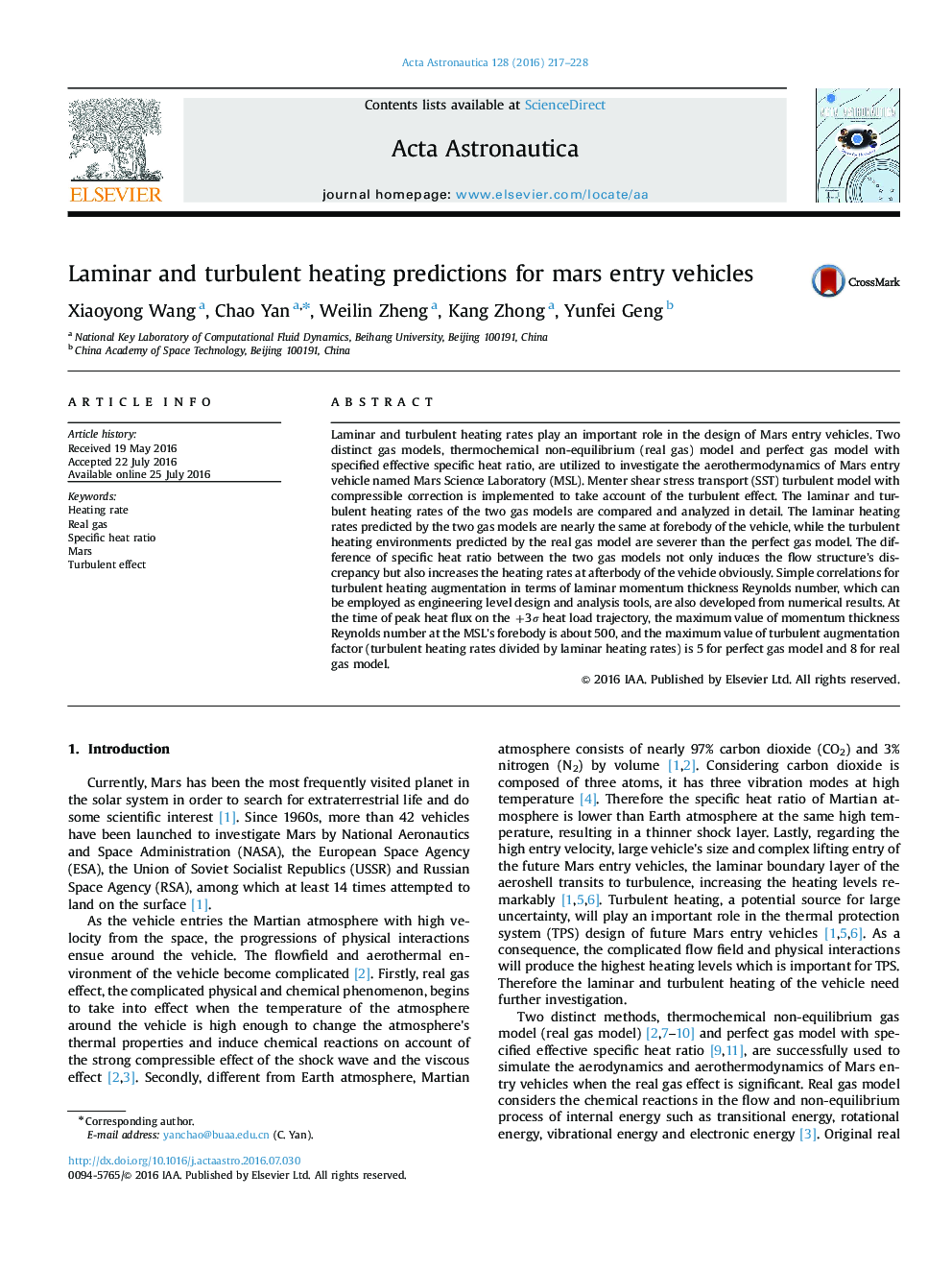| کد مقاله | کد نشریه | سال انتشار | مقاله انگلیسی | نسخه تمام متن |
|---|---|---|---|---|
| 1714142 | 1519926 | 2016 | 12 صفحه PDF | دانلود رایگان |
عنوان انگلیسی مقاله ISI
Laminar and turbulent heating predictions for mars entry vehicles
ترجمه فارسی عنوان
پیش بینی گرمایی و آشفته برای وسایل نقلیه ورودی
دانلود مقاله + سفارش ترجمه
دانلود مقاله ISI انگلیسی
رایگان برای ایرانیان
کلمات کلیدی
نرخ گرمایش، گاز واقعی، نسبت حرارت ویژه، مریخ، اثر متضاد،
موضوعات مرتبط
مهندسی و علوم پایه
سایر رشته های مهندسی
مهندسی هوافضا
چکیده انگلیسی
Laminar and turbulent heating rates play an important role in the design of Mars entry vehicles. Two distinct gas models, thermochemical non-equilibrium (real gas) model and perfect gas model with specified effective specific heat ratio, are utilized to investigate the aerothermodynamics of Mars entry vehicle named Mars Science Laboratory (MSL). Menter shear stress transport (SST) turbulent model with compressible correction is implemented to take account of the turbulent effect. The laminar and turbulent heating rates of the two gas models are compared and analyzed in detail. The laminar heating rates predicted by the two gas models are nearly the same at forebody of the vehicle, while the turbulent heating environments predicted by the real gas model are severer than the perfect gas model. The difference of specific heat ratio between the two gas models not only induces the flow structure's discrepancy but also increases the heating rates at afterbody of the vehicle obviously. Simple correlations for turbulent heating augmentation in terms of laminar momentum thickness Reynolds number, which can be employed as engineering level design and analysis tools, are also developed from numerical results. At the time of peak heat flux on the +3Ï heat load trajectory, the maximum value of momentum thickness Reynolds number at the MSL's forebody is about 500, and the maximum value of turbulent augmentation factor (turbulent heating rates divided by laminar heating rates) is 5 for perfect gas model and 8 for real gas model.
ناشر
Database: Elsevier - ScienceDirect (ساینس دایرکت)
Journal: Acta Astronautica - Volume 128, NovemberâDecember 2016, Pages 217-228
Journal: Acta Astronautica - Volume 128, NovemberâDecember 2016, Pages 217-228
نویسندگان
Xiaoyong Wang, Chao Yan, Weilin Zheng, Kang Zhong, Yunfei Geng,
